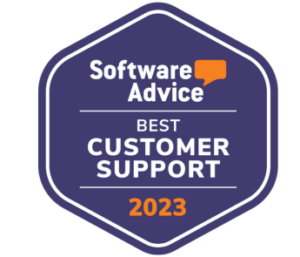The Future of ERP: AI, Automation, and Analytics Powering the Next Generation of Business

The Future Is Already Here — It’s Just Unevenly Adopted
Walk into two manufacturing or distribution companies today, and you might feel like you’ve stepped into different decades.
One is buried in spreadsheets, manual reporting, and reactive decision-making. The other is running on predictive analytics, automated workflows, and real-time insights.
The difference isn’t just technology — it’s transformation.
This is the next era of Enterprise Resource Planning (ERP), where Artificial Intelligence (AI), automation, and analytics are reshaping how businesses operate.
Cloud-based systems like Kechie ERP are leading this shift, combining intelligence and integration to help growing manufacturers and distributors operate smarter, faster, and more profitably.
1. From Data Collection to Data Intelligence
Traditional ERP systems were designed to collect and store data.
But modern businesses don’t just need data — they need insight.
AI-driven ERP platforms like Kechie transform raw information into real-time intelligence.
They analyze sales trends, production metrics, and supplier performance to uncover patterns that would otherwise go unnoticed.
For example, Kechie can highlight when a particular supplier’s lead time is rising or when a product’s margins are tightening — before those issues affect your bottom line.
This is the shift from reactive to predictive — from hindsight to foresight.
2. Automation: Doing More With Less Manual Effort
Manual tasks slow teams down and invite mistakes.
Modern ERP automation takes care of those repetitive, time-consuming jobs — freeing employees to focus on strategy and service.
Kechie automates key workflows across operations:
- Reordering materials when inventory hits predefined thresholds
- Approving purchase orders or invoices based on set rules
- Generating and sending recurring reports automatically
The result? Fewer errors, faster turnaround times, and consistent accuracy across every department.
Automation doesn’t replace people — it empowers them.
3. Predictive Analytics and Smarter Decision-Making
Data becomes powerful when it helps you make the right call before problems arise.
Kechie’s built-in analytics engine uses predictive modeling to forecast demand, optimize production, and identify cost-saving opportunities.
Distributors can anticipate which SKUs are likely to run low.
Manufacturers can plan production around upcoming spikes in demand.
These insights let leaders move from reacting to issues to strategically planning around them — saving time, money, and stress.
4. AI-Powered Forecasting and Resource Planning
Artificial Intelligence is rapidly becoming the brain of ERP systems.
It doesn’t just process data — it learns from it.
Kechie uses AI algorithms to:
- Improve forecasting accuracy
- Spot inefficiencies in production or purchasing
- Recommend the optimal reorder quantities
- Suggest supplier alternatives based on performance history
With AI guiding decisions, manufacturers and distributors can better balance supply and demand, manage costs, and keep customers satisfied.
5. Connected Ecosystems and API-Driven Integrations
No business operates in isolation — and your ERP shouldn’t either.
The future of ERP lies in API-driven integration, where systems communicate fluidly and data flows seamlessly between tools.
Kechie ERP is built to connect your entire operation. It integrates smoothly with:
- Shopify for eCommerce and order management
- EDI platforms for supplier and retailer data exchange
- QuickBooks for financial synchronization
- POS systems for real-time sales visibility
- Credit card processing tools for streamlined transactions
- Shipping solutions for end-to-end fulfillment tracking
And because Kechie also includes its own CRM, you get one unified platform for customer management, sales tracking, and operational execution.
Every part of your business — from order intake to delivery — runs in perfect sync.
6. Cloud Infrastructure and Continuous Improvement
The cloud was the foundation of ERP’s evolution — but now it’s also the catalyst for ongoing innovation.
With Kechie’s cloud-native architecture, updates happen automatically, without disrupting daily work. You’re always on the latest version, always secure, and always benefiting from new capabilities.
Cloud infrastructure also supports the computing power required for AI and advanced analytics — enabling constant optimization and scalability without hardware limitations.
7. Mobile ERP and Real-Time Accessibility
In today’s distributed work environment, teams need to stay connected no matter where they are.
Kechie’s mobile-friendly design allows users to manage orders, approve transactions, and access dashboards from any device.
Warehouse managers can update inventory levels from the floor.
Sales reps can check customer histories before meetings.
Executives can track KPIs on the go.
Mobility means visibility — and visibility means control.
8. Sustainability and Smart Resource Management
Future-ready ERP systems are helping companies reduce waste, cut emissions, and optimize resource use.
With Kechie, manufacturers and distributors can:
- Track production efficiency and scrap levels
- Monitor supplier sustainability metrics
- Optimize shipping routes to lower fuel usage
By aligning operational efficiency with environmental responsibility, businesses can achieve growth that’s both profitable and sustainable.
9. The Human Side of ERP Innovation
Technology is only as valuable as the people who use it.
AI and automation aren’t replacing human intelligence — they’re amplifying it.
Kechie’s intuitive design helps every user — from warehouse teams to executives — make data-driven decisions with ease.
Instead of chasing down reports, employees can focus on improvement and innovation.
That’s the real magic of ERP evolution: people and technology working in harmony.
10. The Road Ahead: Smarter, Simpler, Seamlessly Connected
The next generation of ERP will be more intelligent, adaptive, and collaborative than ever before.
Businesses that adopt these innovations early — AI forecasting, API integrations, real-time analytics — will gain an advantage that compounds over time.
Kechie ERP embodies that future:
- Intelligent automation for speed and precision
- Real-time analytics for smarter planning
- Seamless integrations for a unified business experience
It’s not just an ERP system — it’s a growth platform designed for the modern manufacturer and distributor.
Conclusion: The Future Belongs to the Insight-Driven
The future of ERP isn’t about more technology — it’s about more clarity.
AI, automation, and connected integrations are helping businesses see further, react faster, and grow smarter.
Kechie ERP makes that future tangible — today.
By combining intelligent automation, predictive analytics, and seamless integrations, it gives you the power to make better decisions, reduce costs, and stay agile in an unpredictable world.
If you’re ready to see how technology can empower your business — not overwhelm it — the future is already waiting.
And with Kechie, it’s within reach.
Contact us today to learn more about how Kechie ERP can transform your inventory management practices!
In This Article
1. From Data Collection to Data Intelligence
2. Automation: Doing More With Less Manual Effort
3. Predictive Analytics and Smarter Decision-Making
4. AI-Powered Forecasting and Resource Planning
5. Connected Ecosystems and API-Driven Integrations
6. Cloud Infrastructure and Continuous Improvement
7. Mobile ERP and Real-Time Accessibility
8. Sustainability and Smart Resource Management
9. The Human Side of ERP Innovation
10. The Road Ahead: Smarter, Simpler, Seamlessly Connected
-Conclusion: The Future Belongs to the Insight-Driven










